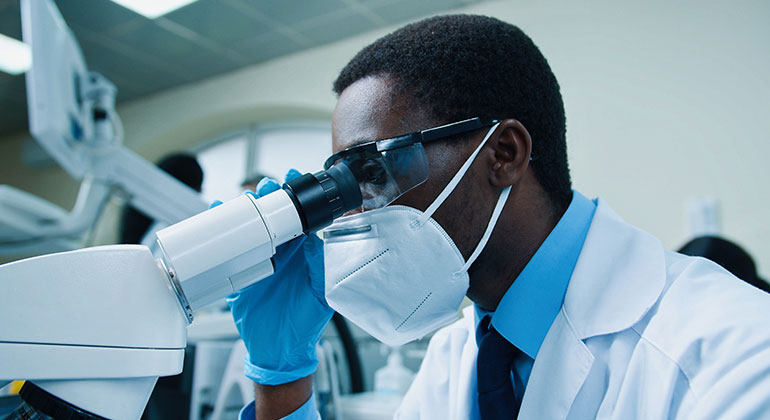Mount Sinai Develops Method to Advance Maturation of Human Pluripotent Stem Cell-Derived Heart Cells
Discovery Could Improve Disease Modeling and Treatment New study outlines scalable protocol to enhance development and understanding of human pluripotent stem cells in cardiac muscles

A Mount Sinai-led team has developed a reproducible and scalable method to advance maturation of human pluripotent stem cell-derived cardiomyocytes (hPSC-CMs)—cells that support heart muscle contraction, generated in the lab from human stem cell lines—which researchers say will improve approaches for disease modeling, regenerative therapies, and drug testing. A study reporting this new protocol was published in the April 7 print edition of the journal Cell Stem Cell.
Mount Sinai researchers investigated multiple metabolic modifications in hPSC-CMs. The research team also identified the role of the protein known as peroxisome proliferator activated receptor delta (PPARd) in inducing what is referred to as the metabolic switch in the lab-generated heart muscle cells. This metabolic switch is a critical part of the maturation process of the heart.
“This work will create exciting opportunities to further assess human heart biology through multi-disciplinary approaches incorporating developmental biology, transcriptomics, contractile measurements and drug testing,” said senior author Nicole C. Dubois, PhD, Associate Professor of Cell, Developmental and Regenerative Biology at the Black Family Stem Cell Institute and The Mindich Child Health and Development Institute at the Icahn School of Medicine at Mount Sinai. “Our findings provide a new avenue to generate mature hPSC-CMs for disease modeling and regenerative therapy. We are moving a step closer to understanding how to leverage our knowledge of human development to improved access to mature human cell types.”
In the study, the researchers activated different signaling pathways in vitro to replicate the metabolic changes that would occur during heart development in the organism. They found that PPARd induces the metabolic switch from glycolysis to fatty acid oxidation in the lab setting, thus influencing whether heart muscle cells generate energy from glucose or fatty acids. While the signaling effects of the protein peroxisome proliferator activated receptor alpha (PPARa) are the most active in heart muscle cells, the researchers said PPARd signaling has a separate and important role in efficiently activating the gene regulatory networks, increasing the quantity and organization of the organelles involved in energy production, and augmenting the fatty acid oxidation process. The activation of signaling regulated by PPARd can further enhance heart muscle cell size and organization, and improve contractility, all hallmarks of heart maturation.
The research team also investigated the effects of lactate exposure, where heart muscle cells are able to survive on lactate in the absence of glucose. This is frequently used to enrich hPSC-CMs. The researchers found that this method can induce an independent mechanism of cardiac maturation, and when combined with PPARd, it enhances oxidative metabolism, allowing for efficient energy generation from both carbohydrates and fatty acids. This study allowed for a detailed analysis into the long-term effects of a commonly used protocol in the heart muscle field.
In collaboration with the Ma’ayan lab at Mount Sinai, the group has generated a comprehensive and publicly accessible dataset which details the transcriptomic changes observed by the Mount Sinai-led team. This dataset allows researchers studying either PPAR-regulated signaling or lactate selection to rapidly assess future targets for research or drug testing.
Mount Sinai’s Department of Pharmacological Sciences; The Friedman Brain Institute; the Departments of Psychiatry, Oncological Sciences, and Genetics and Genomic Sciences; the Institute for Systems Biomedicine; and the Department of Obstetrics and Gynecology contributed to this research, in addition to the Children’s Hospital of Philadelphia Research Institute and the University Medical Center Hamburg-Eppendorf.
This work was supported by funding from The Mindich Child Health and Development Institute and grants R01HL134956 and R56HL128646 from the National Institute of Health (NIH)/the National Heart, Lung, and Blood Institute (NHLBI).
About the Mount Sinai Health System
Mount Sinai Health System is one of the largest academic medical systems in the New York metro area, with 48,000 employees working across seven hospitals, more than 400 outpatient practices, more than 600 research and clinical labs, a school of nursing, and a leading school of medicine and graduate education. Mount Sinai advances health for all people, everywhere, by taking on the most complex health care challenges of our time—discovering and applying new scientific learning and knowledge; developing safer, more effective treatments; educating the next generation of medical leaders and innovators; and supporting local communities by delivering high-quality care to all who need it.
Through the integration of its hospitals, labs, and schools, Mount Sinai offers comprehensive health care solutions from birth through geriatrics, leveraging innovative approaches such as artificial intelligence and informatics while keeping patients’ medical and emotional needs at the center of all treatment. The Health System includes approximately 9,000 primary and specialty care physicians and 10 free-standing joint-venture centers throughout the five boroughs of New York City, Westchester, Long Island, and Florida. Hospitals within the System are consistently ranked by Newsweek’s® “The World’s Best Smart Hospitals, Best in State Hospitals, World Best Hospitals and Best Specialty Hospitals” and by U.S. News & World Report's® “Best Hospitals” and “Best Children’s Hospitals.” The Mount Sinai Hospital is on the U.S. News & World Report® “Best Hospitals” Honor Roll for 2025-2026.
For more information, visit https://www.mountsinai.org or find Mount Sinai on Facebook, Instagram, LinkedIn, X, and YouTube.